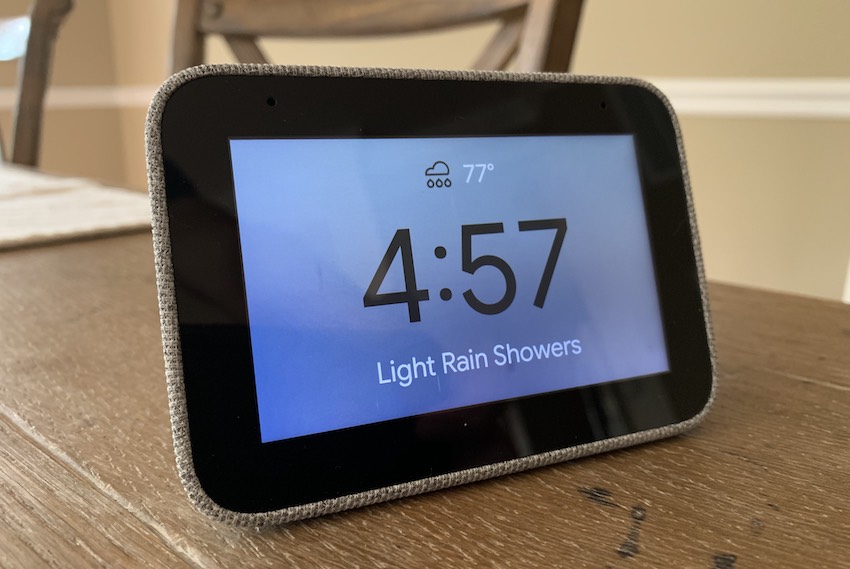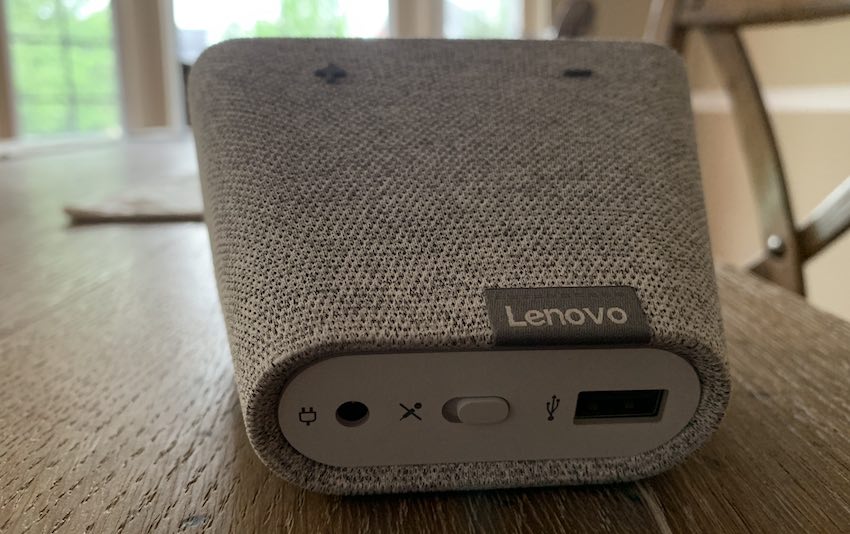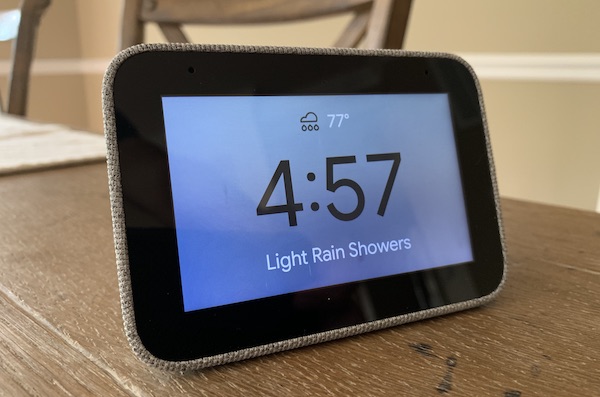Lenovo Smart Clock with Google Assistant Delivers on What it Promises and Exemplifies a Use Case Specific Voice Device

- Lenovo Smart Clock is a smart display optimized for the bedside nightstand
- Google Assistant is the default voice assistant
- It will invariably be compared to the smart displays Echo Spot, Echo Show 5, and Google Nest Hub
- It is the lowest priced smart display available today, but it lacks video streaming and chat features
The smart display battle for the bedside nightstand is well underway and Lenovo currently has the most competitively priced offering in the category. Announced originally at CES 2019 and now on sale, the Lenovo Smart Clock is priced at $79.99 and has Google Assistant as its resident voice assistant. It has a 4-inch screen that displays one of four clock-face options. However, that screen cannot stream videos, allow for video chat, or display Google Photos. So, it is technically a smart display but at the same time lacks many of the core features that take advantage of voice-interactive screens. What it does optimize for is the alarm clock use case.
The Smart Alarm Clock
What makes an alarm clock smart? First, it must be voice addressable and have assistant capabilities. The Lenovo Smart Clock has Google Assistant and can access first-party Google Actions such as the weather, calculate navigation time, and conduct searches. It can access second-party services such as your Google calendar and YouTube Music which are both developed by Google but not part of the native Assistant software and service stack. For example, if you have a Google calendar entry for that day, it will display details on the screen. You can also use the device to access third-party Google Actions such as Voicebot Podcast, NPR, Spotify, and Magic 8-ball.
In addition, the device has a persistent clock face which displays the time along with well-designed alarm functionality. You can set the alarm by voice or by swiping the screen and entering the time by touch. These features are easy to use and worked reliably in testing. However, where the alarm clock functionality really stands out is when the alarm sounds. The initial alarm sound is at a low volume level so you are not jarred out of your slumber. That is followed in sequence by alarm sounds that become progressively louder. If you’d like to snooze the alarm, you can lightly tap the top of the device or ask Google Assistant to do it. The standard snooze duration is 10-minutes. If you ask Google Assistant to execute the snooze request, you can also change the snooze duration such as asking for six or twenty-two minutes. Tapping the top of the device is a really nice design feature is you can tap anywhere and it registers.
Differentiating the Small Smart Displays

The device specifications will only come into play for most people if they are comparing Lenovo Smart Clock with Echo Spot, Echo Show 5, or Google Nest Hub. The Echo line of products obviously has Alexa as the assistant compared to Lenovo and Nest Hub which both rely on Google Assistant. Screen size is another key differentiator since the Echo Spot, Lenovo Smart Close, Echo Show 5, and Google Nest Hub have 2.5″, 4″, 5.5″, and 7″ displays respectively. The Spot’s 2.5″ circular screen is novel but that also makes it very limited in the information it can effectively convey. Echo Show 5 and Nest Hub offer far more screen real estate which means they have a larger physical footprint that may make them harder to fit on a nightstand.
However, a really big difference is both of the Alexa-enabled small smart displays offer video streaming, chat, and drop-in features that are not available on either of the Google Assistant-enabled devices. The forthcoming Google Nest Hub Max offers all of these features but it will come with a 10-inch screen and a device footprint too large for all but very large nightstands. Some people may find the lack of a camera in a device for the bedroom to be a plus. However, it is a big feature difference.
Lenovo Smart Clock Feature Summary
Some other features of the Lenovo Smart Clock include physical buttons you can use to adjust the volume when it is inconvenient to ask Google to do it. There is a USB-A port that can be used to charge your smartphone although it won’t charge very quickly given the connection type. Also, there is a physical button on the back of the device that enables users to turn off the microphone. Finally, the diminutive Lenovo Smart Clock gets a lot of audio quality and volume out of a small package with a 6-Watt speaker. A summary of the key features of the device include:
- Google Assistant on board
- 4″ HD Display
- Physical mute button and volume controls
- No camera
- No video display
- No Google Photos support
- Well designed alarm and snooze feature
- Includes a USB-A jack
- 6W onboard speaker
- Price = $79.99
Use Case Specific Devices
Lenovo Smart Clock is the latest in a line of use-case specific devices that are based around voice assistants as the key interface. First, there were general purpose smart speakers such as the original Amazon Echo and Google Home. These devices were designed to offer voice assistant access combined with passable audio quality. Utilitarian devices such as the Echo Dot and Home Mini followed with the key tradeoff being lower quality audio in return for a lower price point. That was followed by premium segment smart speakers with higher cost and better audio quality. You can think of these as devices optimized for the audio listening use case.
Since then, we have seen more use-case-specific smart devices for the car such as Garmin Speak and the Roav Viva and Bolt devices. The Echo Spot and Lenovo Smart Clock are clearly targeting the bedroom as a replacement for the clock radio with the added benefit of voice assistant features at the ready. What we are likely to see next is more devices designed for specific use cases that also house a general purpose voice assistant such as Alexa or Google Assistant and others that enable voice control, but use a proprietary assistant that has a limited range of capabilities and often does not require cloud access. Consumers have demonstrated an interest in voice assistant access and device makers are starting to add it as a feature to devices such as clocks to make them more versatile. Lenovo’s Smart Clock is a good example of what you can do when building a voice-interactive device for a single use case.
Follow @bretkinsella Follow @voicebotai
Echo Show 5 Heats Up the Battle for the Nightstand. Will the New Smart Display Replace Echo Spot?
Google Nest Hub Now Available in Canada and It Immediately Gets New Competition from Echo Show 5









